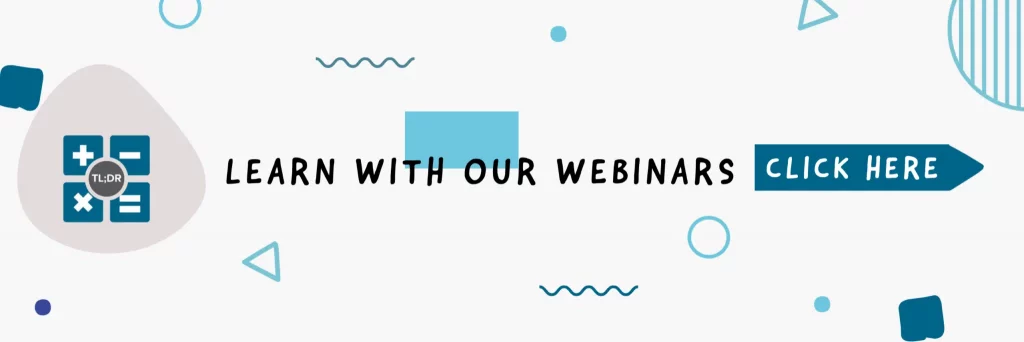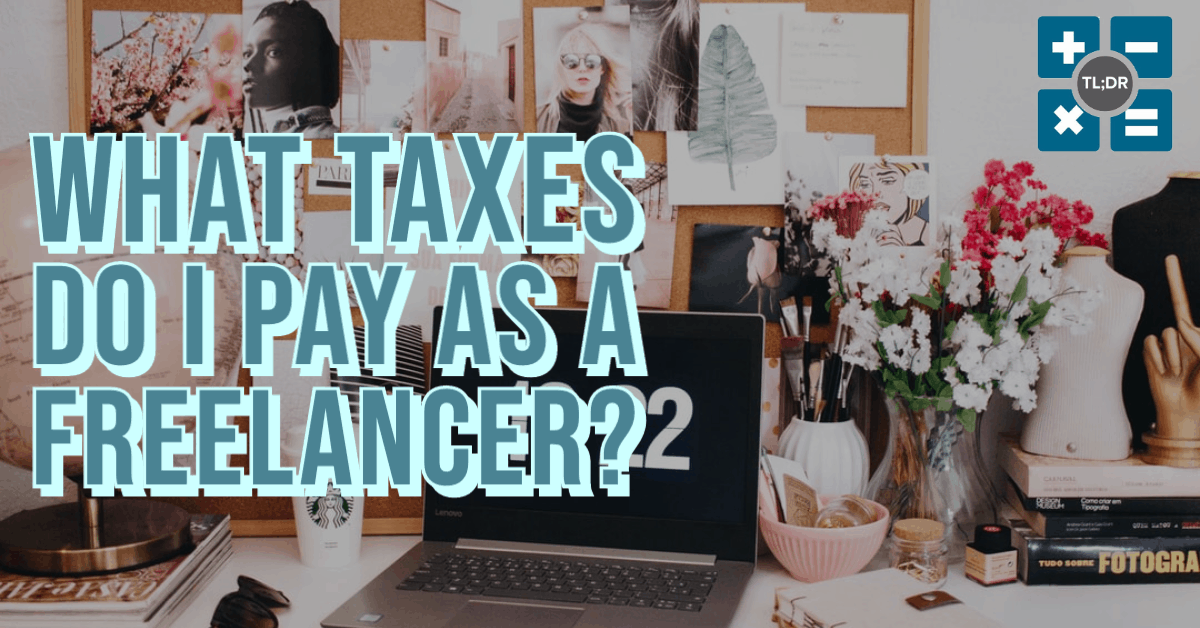Do you work for Uber, TaskRabbit, or Fiverr? Or perhaps you find your own freelance gigs through Craigslist. If things are really going well, maybe your customers or clients find you! Hopefully they pay you in dollars, yen, pesos, or some kind of currency and not in “exposure,” which does not have an exchange rate and cannot be used to pay rent.
Regardless of how you find gigs or how they find you, there is a really important difference between freelancers (also known as “independent contractors”) and employees. As a freelancer, you are your own business. This means that you have to do all of the things that businesses do.
Before we go any further though, let’s not beat around the bush. An independent contractor is not an employee:
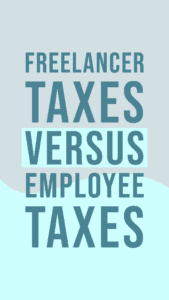
- Freelancers don’t get a W-2; they get 1099s instead.
- Your clients likely won’t withhold income tax from their payments to you. Instead, you must estimate your own taxes, pay them quarterly, and potentially face interest and penalties if you end up underestimating your taxes.
- Speaking of taxes, as an independent contractor you have to pay 15.3% of your income as FICA payroll taxes. Employees only pay 7.65% because their employers pay the other 7.65%.
- As a freelancer, you generally have more freedom to accept or turn down tasks, set your own schedule, and choose your own rate, which may be different for different kinds of tasks. There may be exceptions: well-developed freelancing platforms may tend to set rates for you and simply give you a choice of “take it or leave it.”
- Generally, independent contractors are not expected to work exclusively for a single client. While employment is kind of like marriage, freelancing is more like dating.
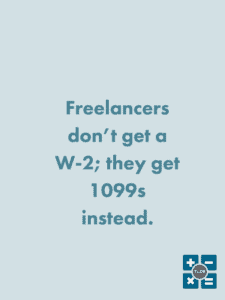
You may have heard of Microsoft getting into hot water a while ago because they treated some of their employees like contractors. Make sure that you know your rights. For example, if a client requires you to be at the office from 9am – 5pm, there’s a good chance they’re misclassifying your employment status or otherwise abusing tax laws.
For the purpose of this article, we’re going to assume that you are not an employer (i.e. you don’t have any employees). If you have employees, there is a whole host of additional rules and regulations to follow.
Track Your Income and Expenses
If you’re not the kind of person to check your bank account regularly, you might not be in the habit of tracking your income and expenses. Most employees can “get away” with not tracking income or expenses because all of their income ends up on one W-2 document (per employer) and their work expenses are presumably all covered or reimbursed by the employer.
Now that you’re a freelancer, you’re going to get a 1099 from everyone who paid you more than $600 during the year. “No problem,” you might think, “I’ll just wait until I get all the 1099s and then add them up.” Well, there are two problems with that. First, you’re still expected to report income under $600 even though you don’t get a 1099 for it. So that one-off job for Tracy that you did back in February for $450 is taxable income.
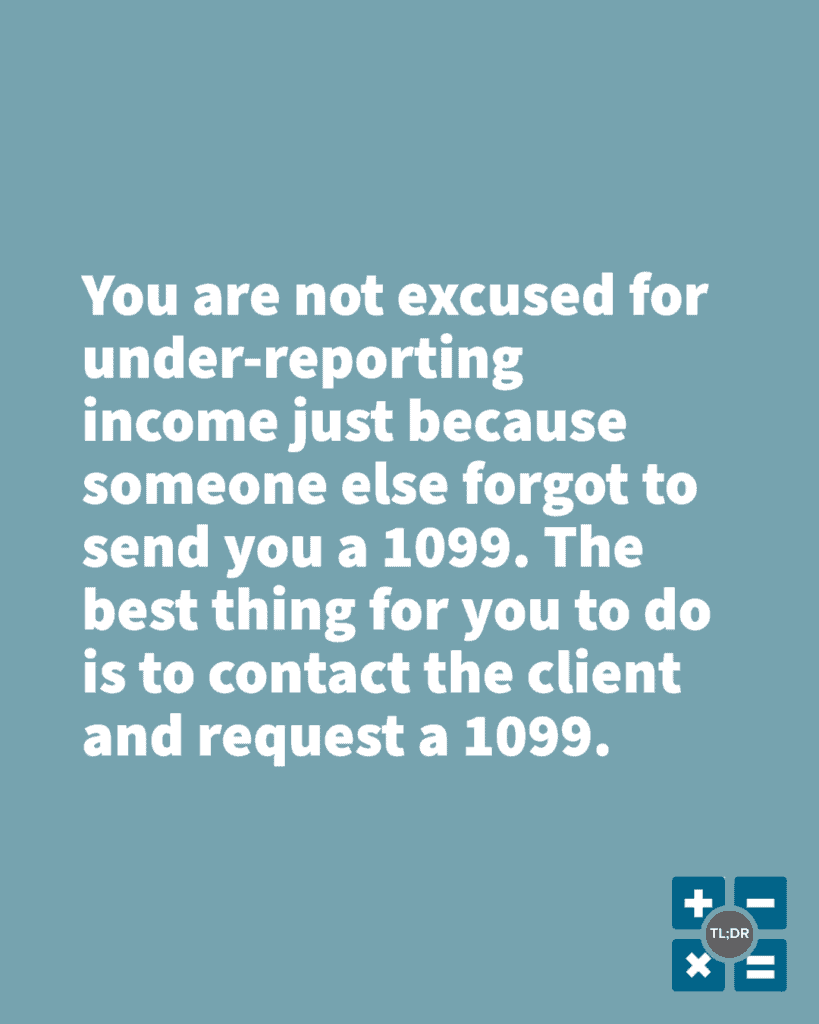
The second problem with passively waiting for the 1099s to come in is that there’s a chance someone might neglect or forget to send you one. Even if a client doesn’t send you a 1099, you are still expected to pay taxes on that income! You are not excused for under-reporting income just because someone else forgot to send you a 1099. The best thing for you to do is to contact the client and request a 1099. If you are unable to contact them or if they’re especially irascible, you still need to report that income!
There are two really good reasons for carefully tracking and reviewing your expenses as well. First, if you lose a business receipt or if you mistakenly mix it in with your personal receipts, you might under-report your business expenses and end up paying more tax than you have to pay. Second, if the IRS comes a-knockin’, they will want to see receipts as evidence of your expenses.
While you can just keep all your receipts in a shoebox labeled “2020,” we recommend that you scan or take photographs of them. QuickBooks has a great feature where you can attach receipt images to expense transactions. If you don’t have QuickBooks, you can just keep a set of folders on your computer sorted by month. It’s a good idea to have some kind of online or offline backup of your receipts, be it on the cloud or on some kind of media storage.
Pay Estimated Taxes in Full and on Time
As an independent contractor, your taxes are no longer “on autopilot.” Most employees don’t have to worry too much about withholding and underpayment of income taxes — employees simply fill out a form W-4 correctly and their employer does the rest. You, on the other hand, should be checking in with your tax professional on a regular basis in order to properly estimate your taxes based on your income records (remember when we said you should be tracking your income?).
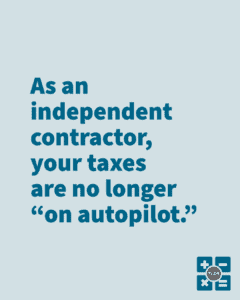
In short, you are responsible for remembering to pay your estimated taxes on time, and for paying the correct amount. There’s no penalty for paying more than you need to pay, but there are underpayment penalties and late fees if you don’t pay enough. Your estimated taxes are paid using form 1040-ES, which is one of the simplest IRS forms, even though there are several pages of instructions.
The IRS rules to avoid a penalty are:
- If you end up owing less than $1,000 in taxes, you will face no penalties. Additionally, if you pay at least 90% of the amount of your actual tax liability, there will be no penalties. These rules, in tandem with employer withholding, keeps most employees from having to worry about estimated taxes.
- The process by which you estimate your current tax liability is very complex and doesn’t really have a “one size fits all” process. We recommend you speak to your tax professional about this.
- If you pay 100% of what your estimated taxes were the previous year, on time in the four installments listed below, you will face no penalties. Bear in mind that you may still owe taxes if business was really good this year compared to last year.
- Important note: If your Adjusted Gross Income (AGI) is more than $150,000, then this 100% changes to 110%.
Here is a 1040-ES schedule straight from the IRS:
| Estimated tax payment | Due Date |
| 1st payment | April 15th of the current year |
| 2nd payment | June 15th of the current year |
| 3rd payment | September 15th of the current year |
| 4th payment | January 15th of the following year |
Report Your Income
Remember how we mentioned that freelancing income is reported via 1099 rather than on a W-2? There are functional differences between the two documents and the income is recorded in a different place on your 1040.
Remember our two points from above: 1) You have to report all income, even if it’s from work that paid you less than $600, and 2) You have to report income whether or not your client sends you a 1099.
With all of this in mind, you might be wondering where to put your 1099 income. As you know, it doesn’t go in Box 1 like employee income. If you’re a sole proprietor, then you report 1099 income on Schedule C of your tax return. If you don’t know whether or not you’re a sole proprietor, then you probably are (unless you have a business partner, in which case you’re probably a partnership). Your Schedule C income flows through to Schedule 1 before flowing to form 1040, but you’re really better off using tax software or paying a professional to do your taxes (like us!).
If you’ve incorporated your business, then you will report your business income on the proper form for your business type: Form 1165 is for Partnerships, Form 1120-S is for S-Corporations, and Form 1120 is for C-Corporations (“regular corporations”). If you are an LLC, then your choice of tax form depends on how your LLC is taxed (a 1040 for a single-member LLC, a 1065 if taxed as a partnership, 1120-S if taxed as an S-Corporation, or an 1120 if taxed as a C-Corporation).
If your business entity is not a sole proprietorship, then we highly recommend that you hire someone to do your taxes. You’ll thank yourself later!
TL;DR: Freelancing comes with both freedom and responsibility. You have the freedom to set your schedule and your rates and do business with multiple clients. But you have the responsibility to track your income and expenses, pay estimated taxes in installments, and report your freelancing income in the correct place on your 1040. Do you have questions we didn’t answer? You can plan a session with one of our accountants any time over on our Let’s Chat page.
